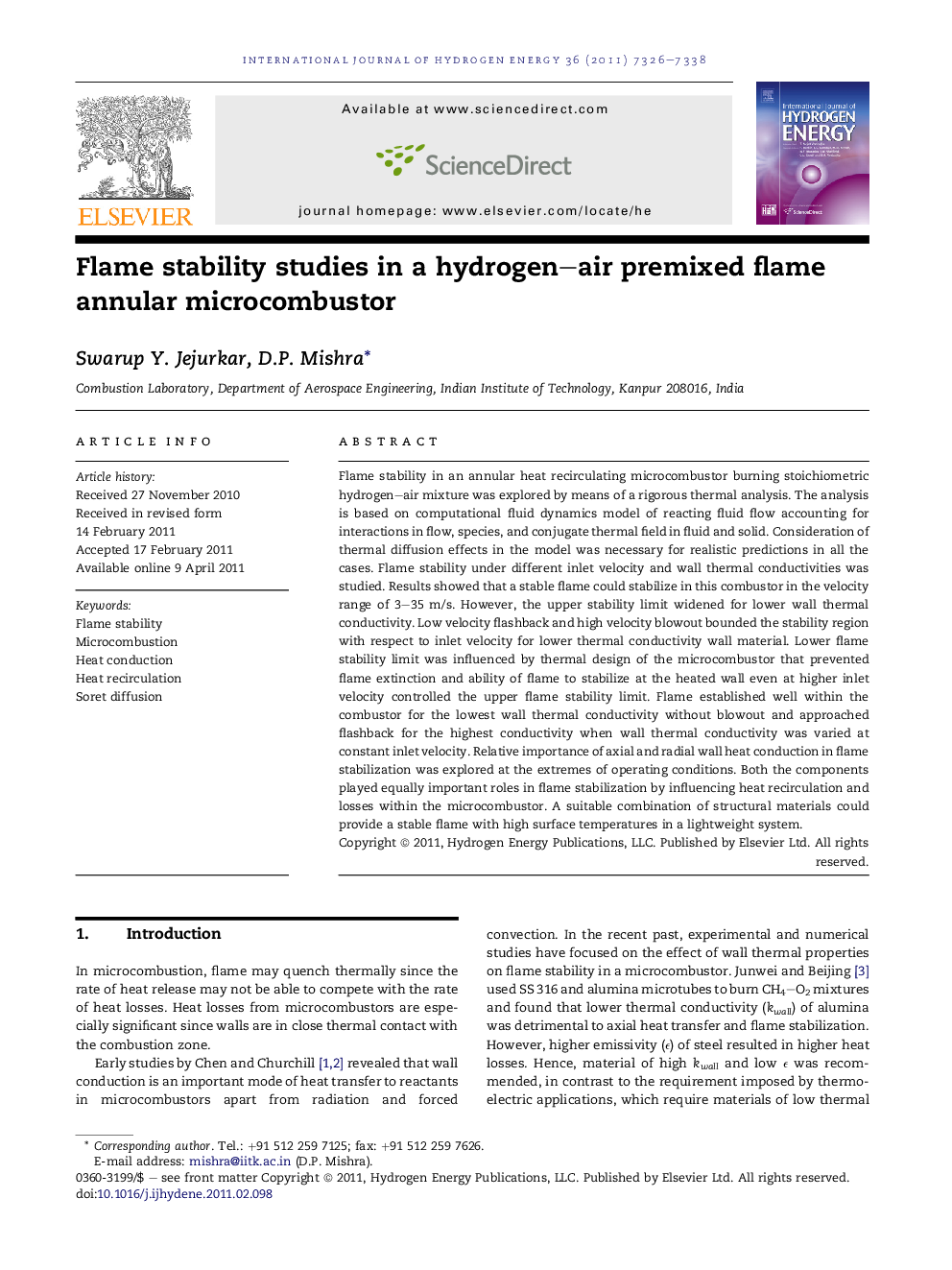| Article ID | Journal | Published Year | Pages | File Type |
|---|---|---|---|---|
| 1272123 | International Journal of Hydrogen Energy | 2011 | 13 Pages |
Flame stability in an annular heat recirculating microcombustor burning stoichiometric hydrogen–air mixture was explored by means of a rigorous thermal analysis. The analysis is based on computational fluid dynamics model of reacting fluid flow accounting for interactions in flow, species, and conjugate thermal field in fluid and solid. Consideration of thermal diffusion effects in the model was necessary for realistic predictions in all the cases. Flame stability under different inlet velocity and wall thermal conductivities was studied. Results showed that a stable flame could stabilize in this combustor in the velocity range of 3–35 m/s. However, the upper stability limit widened for lower wall thermal conductivity. Low velocity flashback and high velocity blowout bounded the stability region with respect to inlet velocity for lower thermal conductivity wall material. Lower flame stability limit was influenced by thermal design of the microcombustor that prevented flame extinction and ability of flame to stabilize at the heated wall even at higher inlet velocity controlled the upper flame stability limit. Flame established well within the combustor for the lowest wall thermal conductivity without blowout and approached flashback for the highest conductivity when wall thermal conductivity was varied at constant inlet velocity. Relative importance of axial and radial wall heat conduction in flame stabilization was explored at the extremes of operating conditions. Both the components played equally important roles in flame stabilization by influencing heat recirculation and losses within the microcombustor. A suitable combination of structural materials could provide a stable flame with high surface temperatures in a lightweight system.
